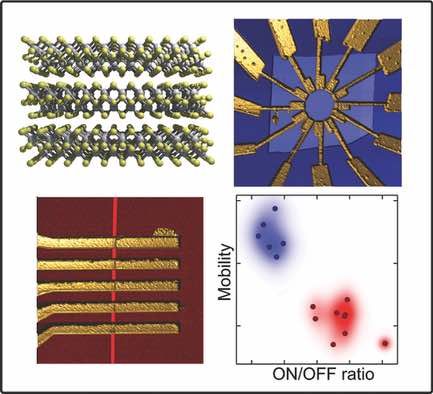Control over the morphology of TiS3 is demonstrated by synthesizing 1D nanoribbons and 2D nanosheets. The nanosheets can be exfoliated down to a single layer. Through extensive characterization of the two morphologies, differences in the electronic properties are found and attributed to a higher density of sulphur vacancies in nanosheets, which, according to density functional theory calculations, leads to an n-type doping.

Control over the morphology of TiS3 is demonstrated by synthesizing 1D nanoribbons and 2D nanosheets. The nanosheets can be exfoliated down to a single layer. Through extensive characterization of the two morphologies, differences in the electronic properties are found and attributed to a higher density of sulphur vacancies in nanosheets, which, according to density functional theory calculations, leads to an n-type doping.
